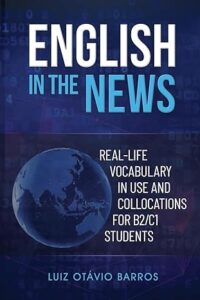Incorporating videos into classes has multiple benefits. First of all, it gives students someone new to listen to and watch, which is really important with individual classes. It also exposes them to new accents and aspects of culture. Last but not least, the novelty of a video and creating meaningful activities connected to prior learning make for memorable learning experiences.
Preparing a meal in a short period of time is something that is popular on television in the United States, and this video is an exaggeration of that.
Before Watching
Before watching the video, I ask students what type of desserts they like. I then introduce the concept of banana splits and ask if they have ever eaten one. I show some examples of them, and we talk about the ingredients and if there’s anything specific they would like to add to a banana split or any ingredients that they wouldn’t like. (In my case I don’t like nuts, so I wouldn’t use walnuts or peanuts in my banana split. I’m already nutty enough.)
We then talk about the utensils needed to make a banana split, and I tell them that in the video some problems happen. I ask each students to make two predictions about is going to go wrong when making a banana split in order to give them a reason to watch.
While Watching
We then watch the video, and at key points I pause it and ask students to make predictions about what is going to happen. (She’s going to hurt her tooth, she’s going to cut her finger, etc.) In addition to the video being hilarious, it engages students to see if their predictions from before watching and while watching are correct.
After Watching
Once the video has finished, you can check if students’ initial predictions were correct or not.
Then comes the interesting part. Using a transcript that I prepared, students then analyze the text. This can be done in a variety of ways:
- Students can read and take note of any words or phrases that pique their interest. This can serve as a great exploratory activity to get students curious about the language.
- They can look for vocabulary such as the utensils and food items as well as any adjectives used to describe them. (crushed walnuts, frozen ice cream, overripe bananas, etc)
- They can also look for uses of specific verb tenses such as will for spontaneous decisions (I’ll just put it in the microwave for thirty seconds.) or the use of interjections. (Wow!)
- If you are focusing on pronunciation, students can pay attention to her intonation, connected speech, or specific sounds that appear in the video.
These are just some suggestions. Students can also rewatch the video as many times as they like to pay attention to details they may have missed the first time.
Conclusion
Using short videos like these can be a powerful way of engaging students in their learning. In addition to giving students another person to listen to and watch in online classes, the ability to see vocabulary and grammar in a natural context opens the doors for many different learning activities. If prepared thoughtfully, the right video and learning activities can result in a lesson that will engage students and leave a powerful memory, impacting their language learning for years to come.
If anyone is interested in receiving a copy of the audioscript please leave a comment below with your email and I will send it to you.
Thanks for reading!


